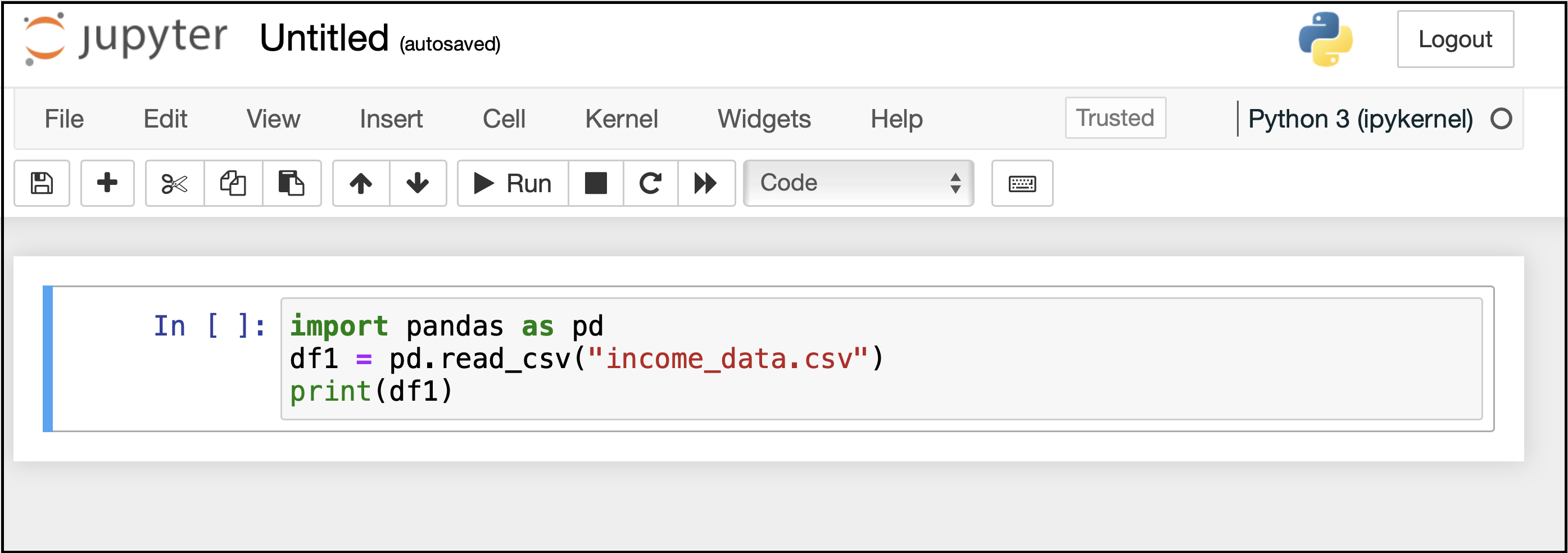Setting up Jupyter Notebook
Jupyter Notebook or Jupyter for short is a substitution of the basic Python shell. It is a great way to write and run Python code when you’re doing exploration type of work. Doing data analysis with Python is a typical case when Jupyter would come in very handy. The notebook comes installed with the latest versions of Python. You can start a notebook session by typing this in the command line:
jupyter notebook
That should open a jupyter notebook in your default browser.

If that doesn’t happen, you should probably install the tool first through the command line using pip:
pip install jupyter
To start a new jupyter session, you should go to New -> Python 3(ipykernel). You should see something like this now:

You can now start typing code in jupyter cells and press Ctrl+Enter to execute it. To create new empty cells, use Alt+Enter. You can always go back and edit any cell in the notebook. You will need some rounds of practice until you get the hang of it, but it will eventually pay off.
Next LectureTable of Contents
Recommended Course
Python Mega Course: Learn Python in 60 Days, Build 20 Apps
Learn Python on Udemy completely in 60 days or less by building 20 real-world applications from web development to data science.
